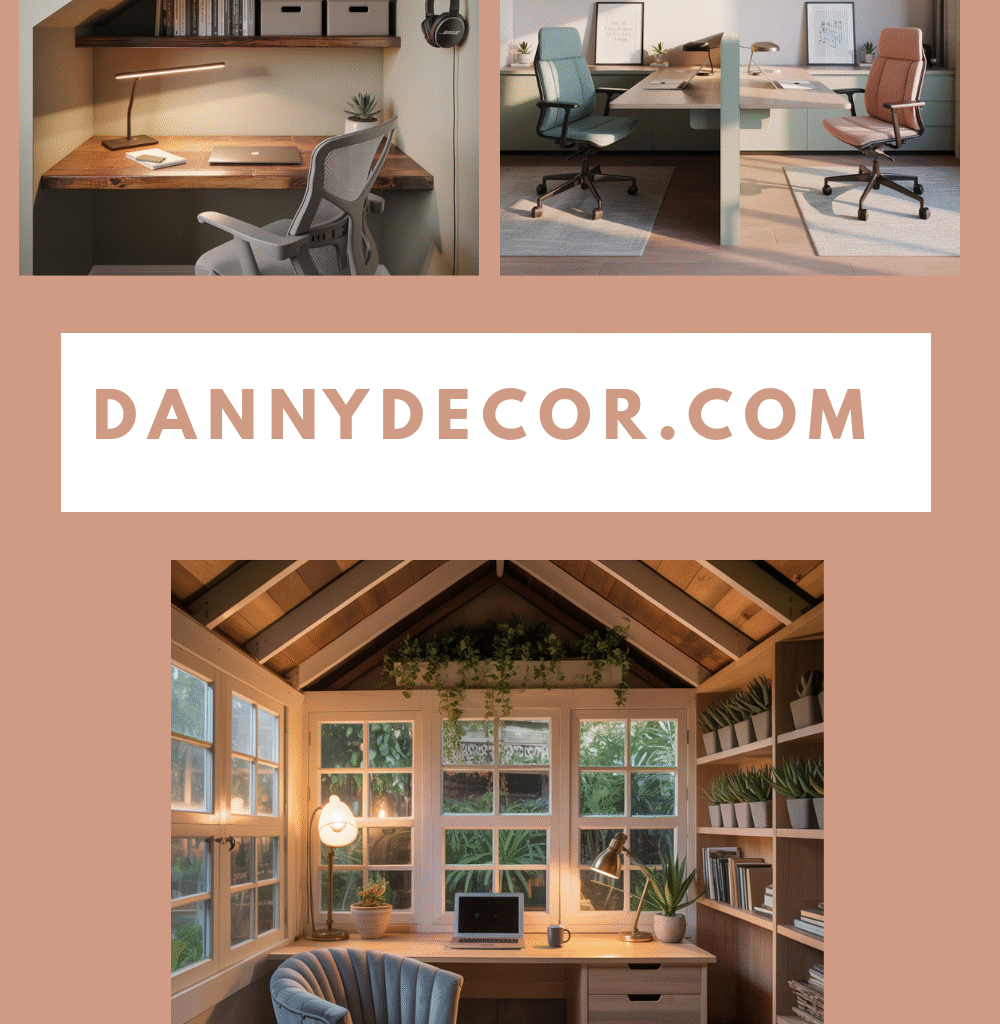
Working from home can feel like an uphill battle when you’re trying to focus while the dishes are calling your name or the neighbor’s dog won’t stop barking. Sound familiar? You’re not alone in this struggle. The difference between a productive day and one where you accomplish nothing often comes down to having the right workspace setup.
Here’s the thing: your home office doesn’t need to be perfect, but it does need to work for you. A thoughtfully designed workspace acts like a productivity multiplier, helping you get into the zone faster and stay there longer. The best part? You don’t need to spend a fortune or renovate your entire home to make it happen.
Small tweaks can yield big results. We’re talking about simple changes like finding the right chair that supports your back, positioning your desk near natural light, or creating storage solutions that actually make sense for how you work. These aren’t revolutionary concepts, but they’re the building blocks of a workspace that energizes rather than exhausts you.
Ready to turn that makeshift desk setup into something that actually inspires you to tackle your to-do list? Let’s dive into 20 practical ideas that can transform any corner of your home into a productivity powerhouse.
19 Transformative Home Office Ideas
1. Maximize Awkward Corners with Smart Desk Solutions
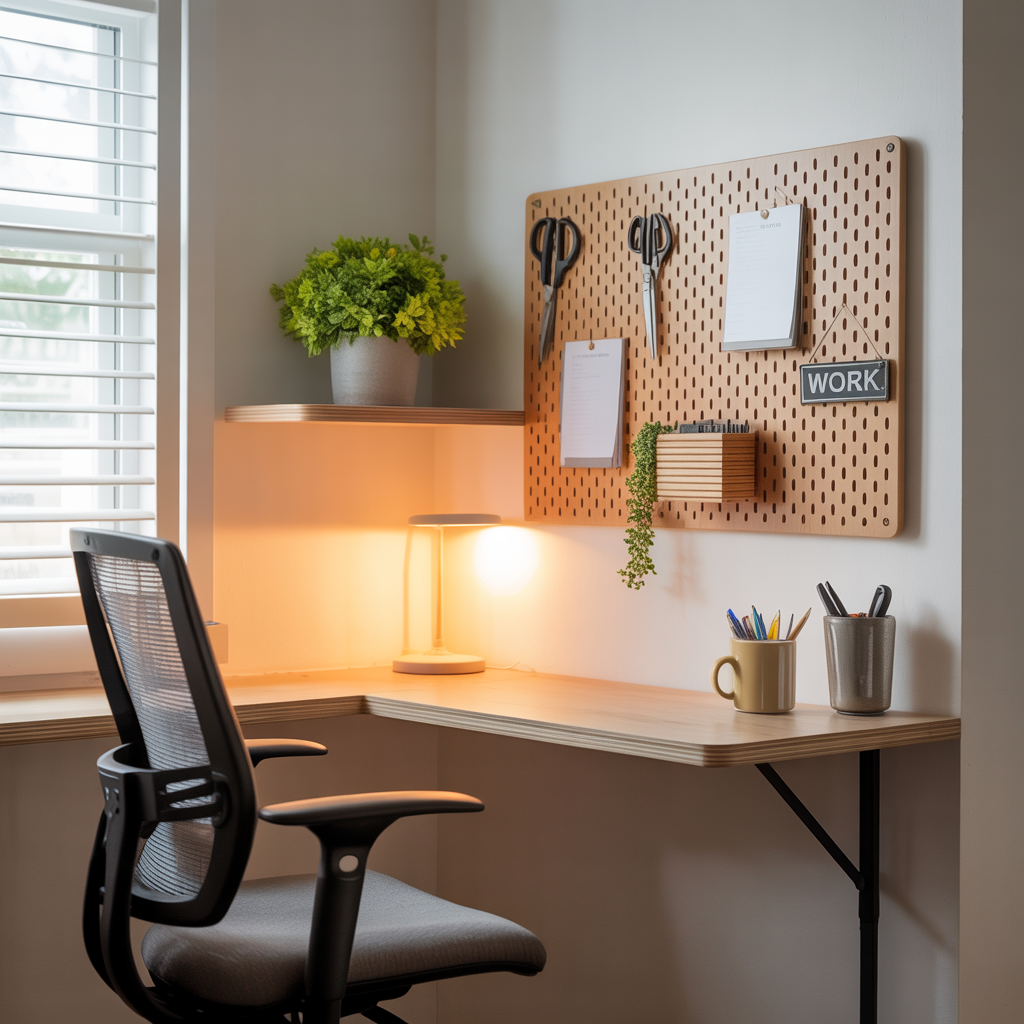
That weird corner where two walls meet? It’s actually prime real estate for your office. A corner desk setup paired with wall-mounted organizers can turn dead space into your command centre. Add a pegboard above your desk to keep frequently used items within arm’s reach think scissors, charging cables, and that good pen you always lose.
The beauty of corner setups lies in their efficiency. You’re literally surrounded by your tools and resources, which means less time hunting for things and more time actually working. Throw in a small floating shelf for your coffee mug or a plant, and you’ve got yourself a workspace that feels intentional rather than thrown together.
2. Wall-Mounted Desks for Space-Conscious Workers
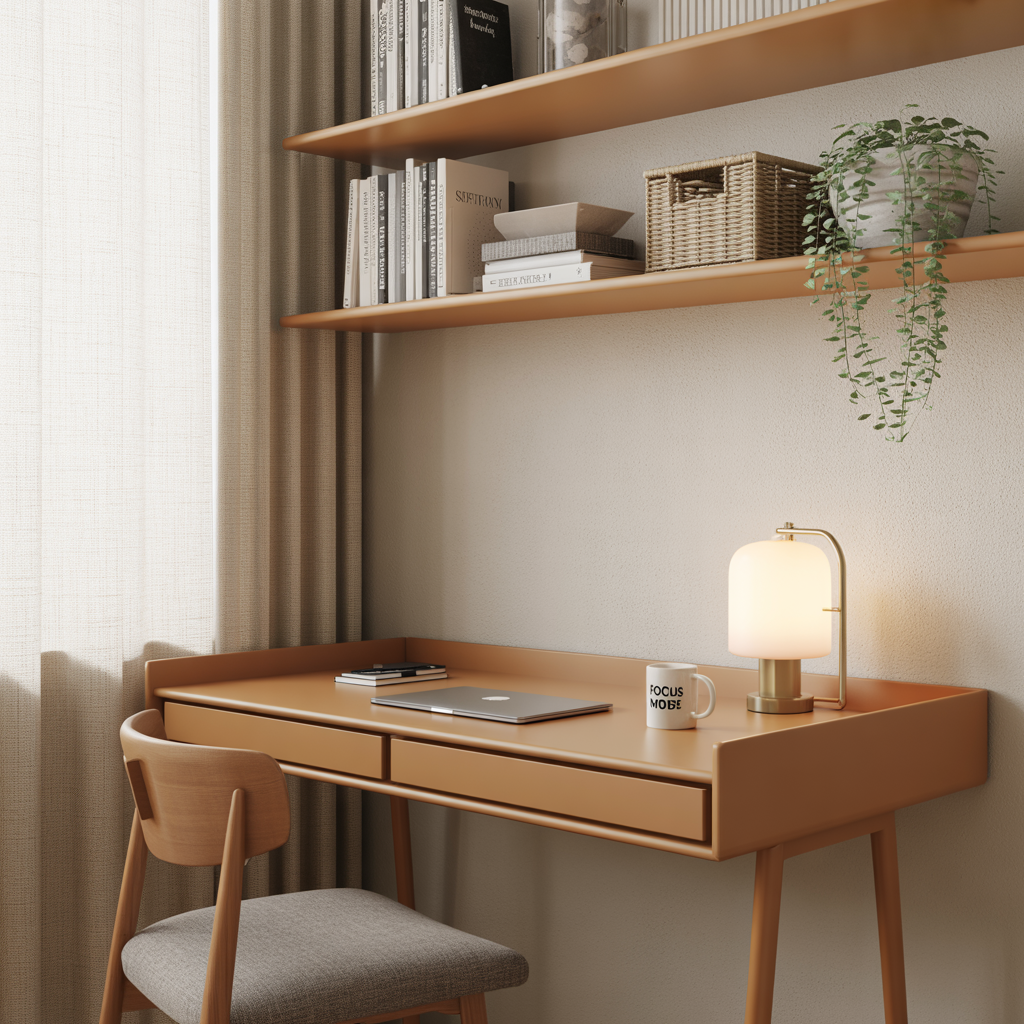
When square footage is at a premium, going vertical is your best friend. A floating wall desk opens up floor space while giving you a dedicated work surface that disappears when not in use. Mount it at the perfect height for your chair, and you’ll wonder why you ever bothered with bulky traditional desks.
The trick with wall-mounted setups is thinking beyond just the desk itself. Install shelves above for supplies and books, or add a small cabinet underneath for hidden storage. Yes, the installation requires some DIY skills, but the payoff in terms of space efficiency is huge. Plus, it’s a renter-friendly solution that won’t eat up your security deposit.
3. Embrace Mid-Century Style for Timeless Appeal
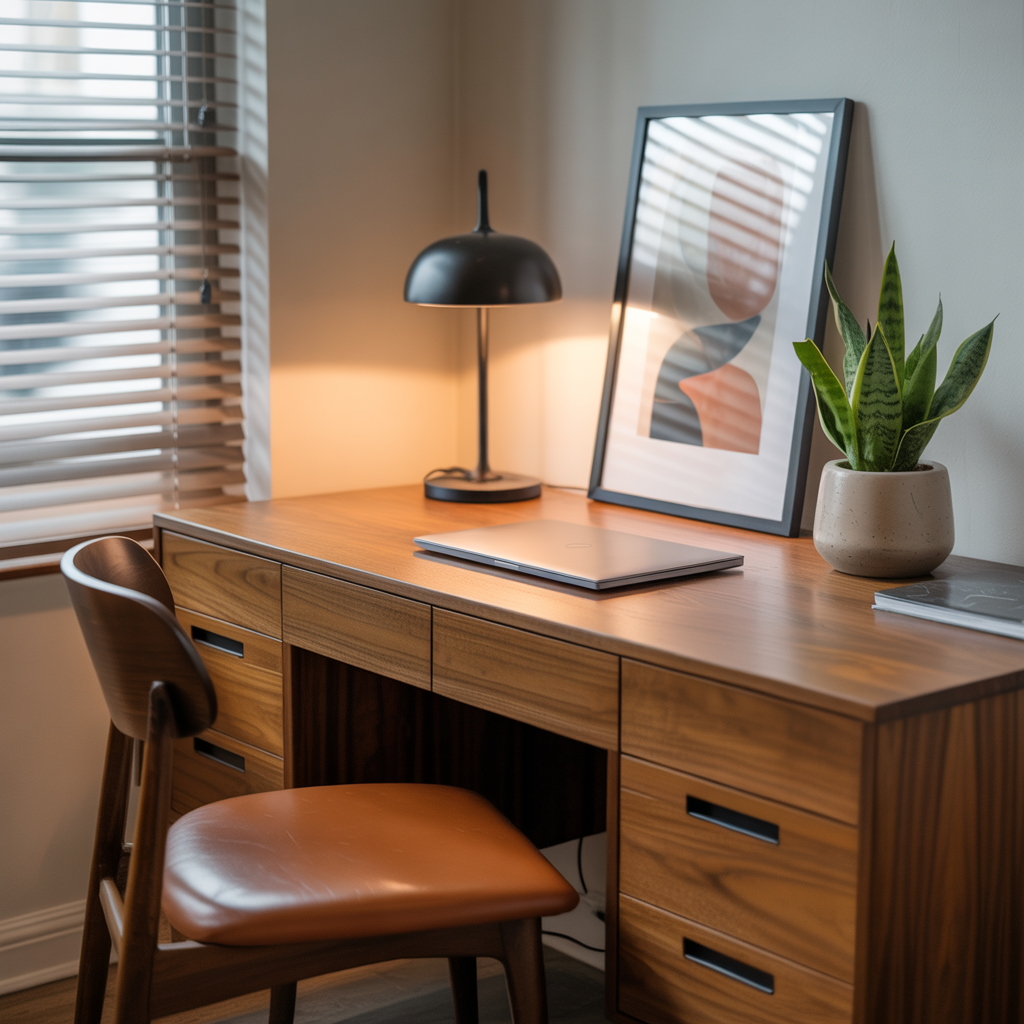
There’s something about mid-century modern furniture that makes work feel less like work. Those clean lines and warm wood tones create an atmosphere that’s both professional and inviting. A well-chosen mid-century desk becomes a statement piece that elevates your entire space.
The key is keeping things simple. Pair your desk with a sleek lamp and maybe one carefully chosen plant. Mid-century design thrives on the “less is more” philosophy, so resist the urge to clutter. If cable management is a concern (and it should be with these clean designs), invest in some cord organizers or go wireless wherever possible.
4. Transform Unused Nooks into Productive Spaces
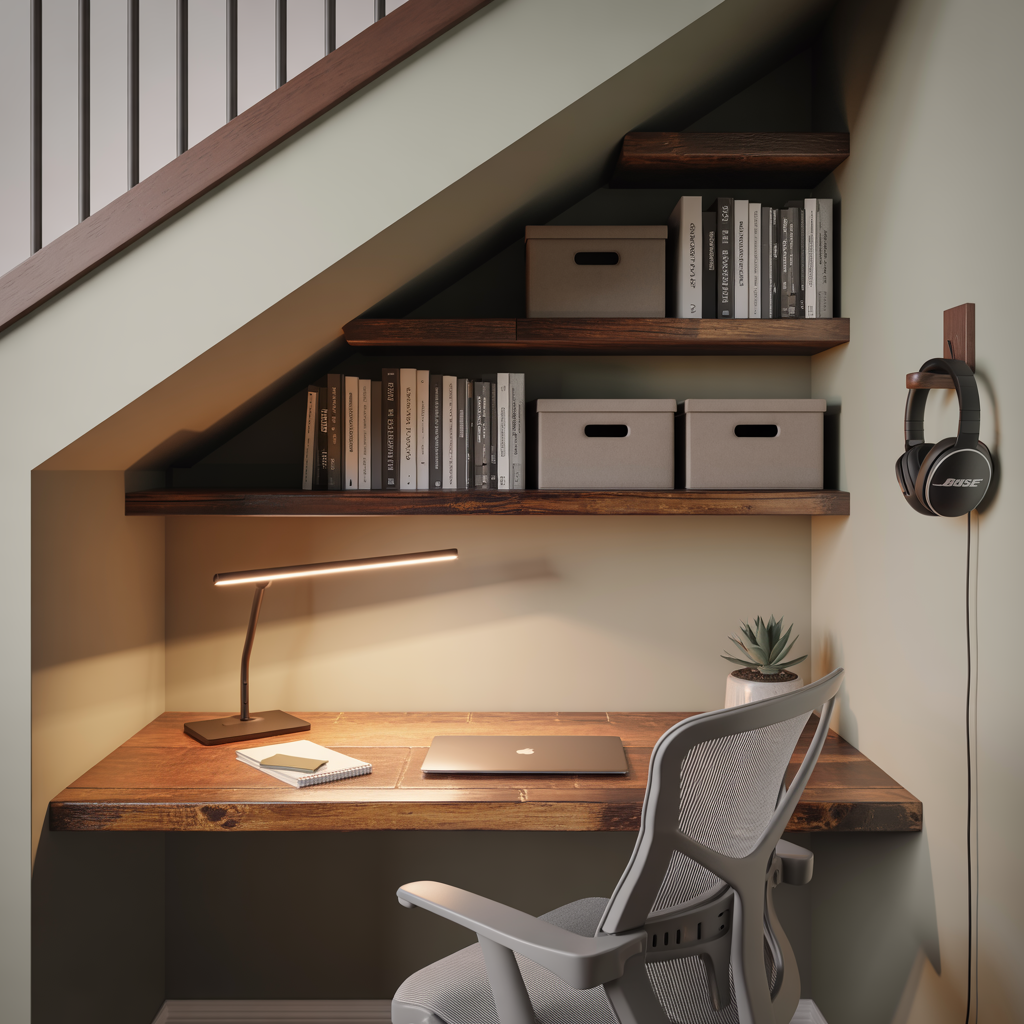
That space under your stairs that’s been collecting dust? It’s begging to become your private office. Built-in nooks offer something most workspaces lack: natural boundaries that help separate work from home life. Even if the space feels tight, it can be surprisingly effective for focused work.
The challenge with tucked-away spaces is usually lighting and ventilation. A good LED desk lamp solves the brightness issue, while a small fan can keep air moving. If noise from the rest of the house is a problem, a pair of noise-canceling headphones will become your best investment.
5. Create Calm with Soft, Feminine Design Elements
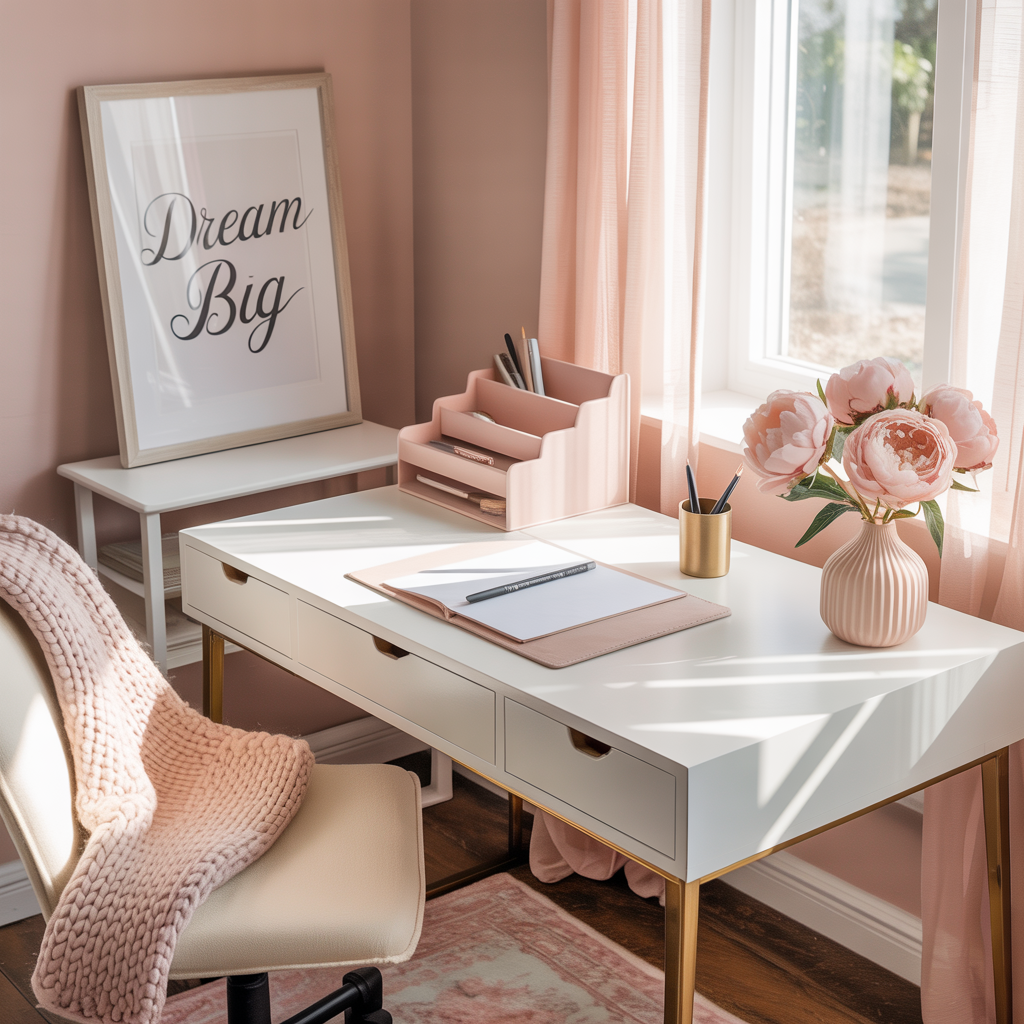
Soft pink and gold accents can transform a sterile workspace into something that actually makes you want to sit down and work. This isn’t about going overboard with sparkles – it’s about incorporating colors and textures that promote focus and reduce stress.
Think subtle touches: a blush-colored desk organizer, gold picture frames, or a soft throw draped over your chair. The goal is creating a space that feels nurturing rather than harsh. Just remember that balance is key – too many decorative elements can become distracting when you’re trying to concentrate.
6. Go Minimal with Monochrome Magic
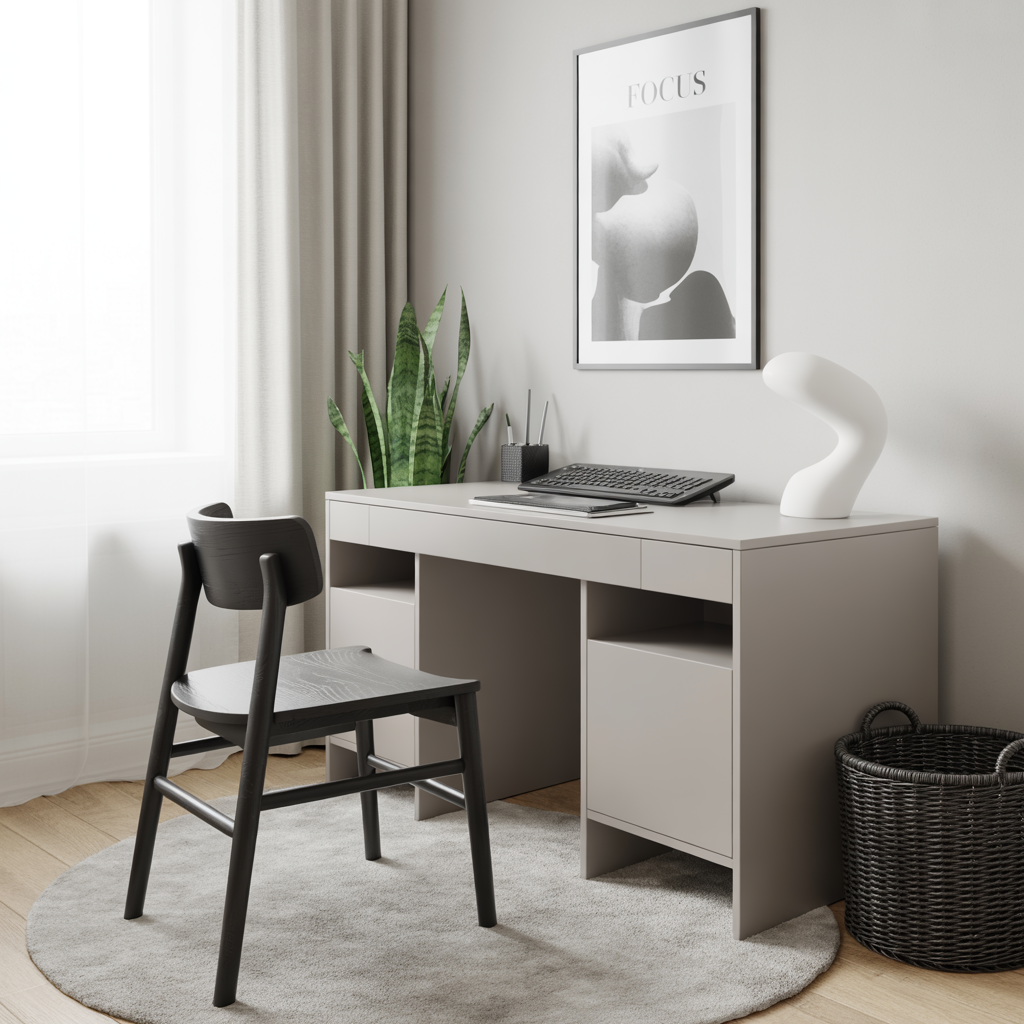
Sometimes the most productive workspaces are the ones that don’t compete for your attention. A black and white color scheme with clean lines creates a backdrop that lets your work take center stage. Add a single green plant, and you’ve got a space that feels both sophisticated and alive.
The beauty of monochrome design is its flexibility. You can swap out accessories easily without disrupting the overall vibe. If stark black and white feels too cold, introduce warmth through textures – a woven basket, a soft rug, or a wooden desk accessory.
7. Industrial Elements for Creative Energy
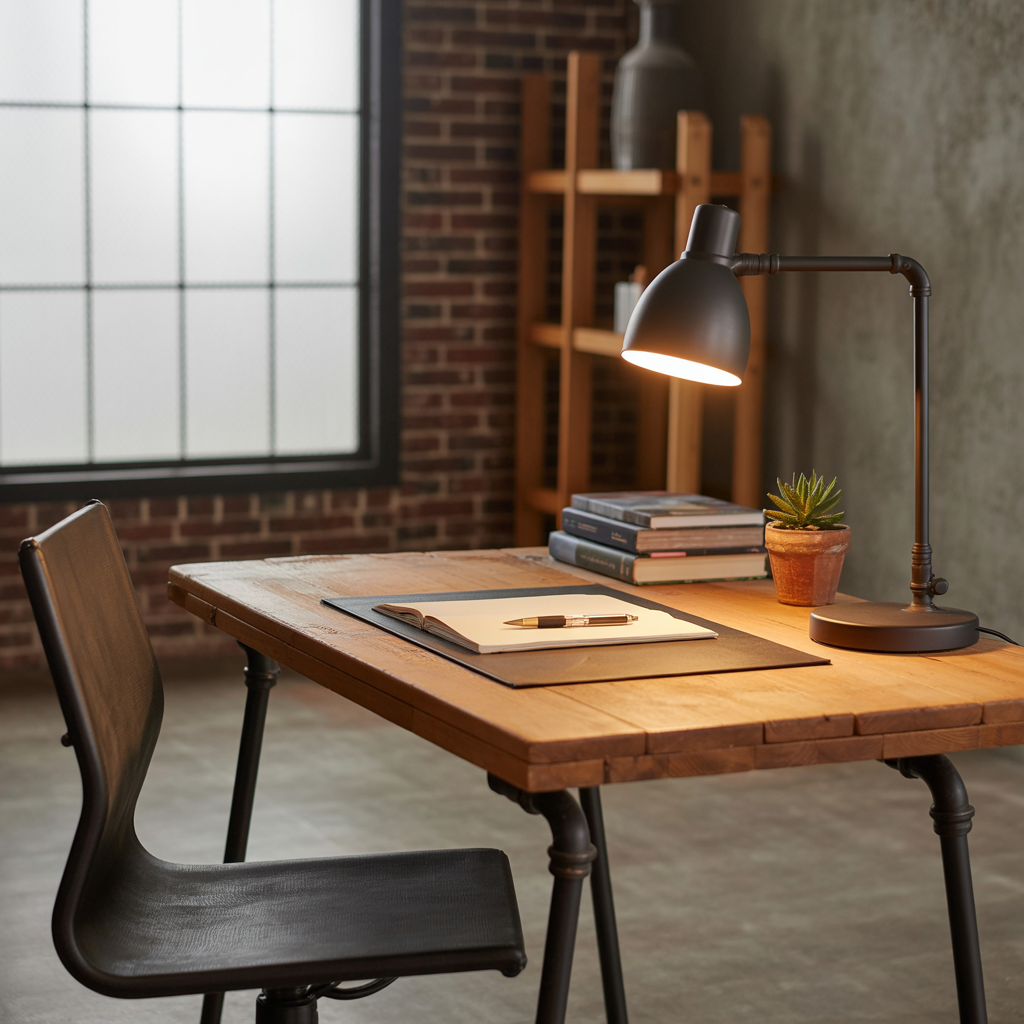
Exposed shelving and metal pipe details aren’t just trendy they’re incredibly functional. Industrial design celebrates the practical, which makes it perfect for a workspace. Open shelves put everything in plain sight, while the raw materials add character that inspires creativity.
The downside? Dust loves open shelving, so you’ll need to stay on top of cleaning. But the upside is significant: when everything has a visible home, you’re more likely to keep things organized. Add a comfortable chair and good lighting, and you’ve got a workspace that feels more like a creative studio than a corporate cubicle.
8. Boho Comfort for Relaxed Productivity
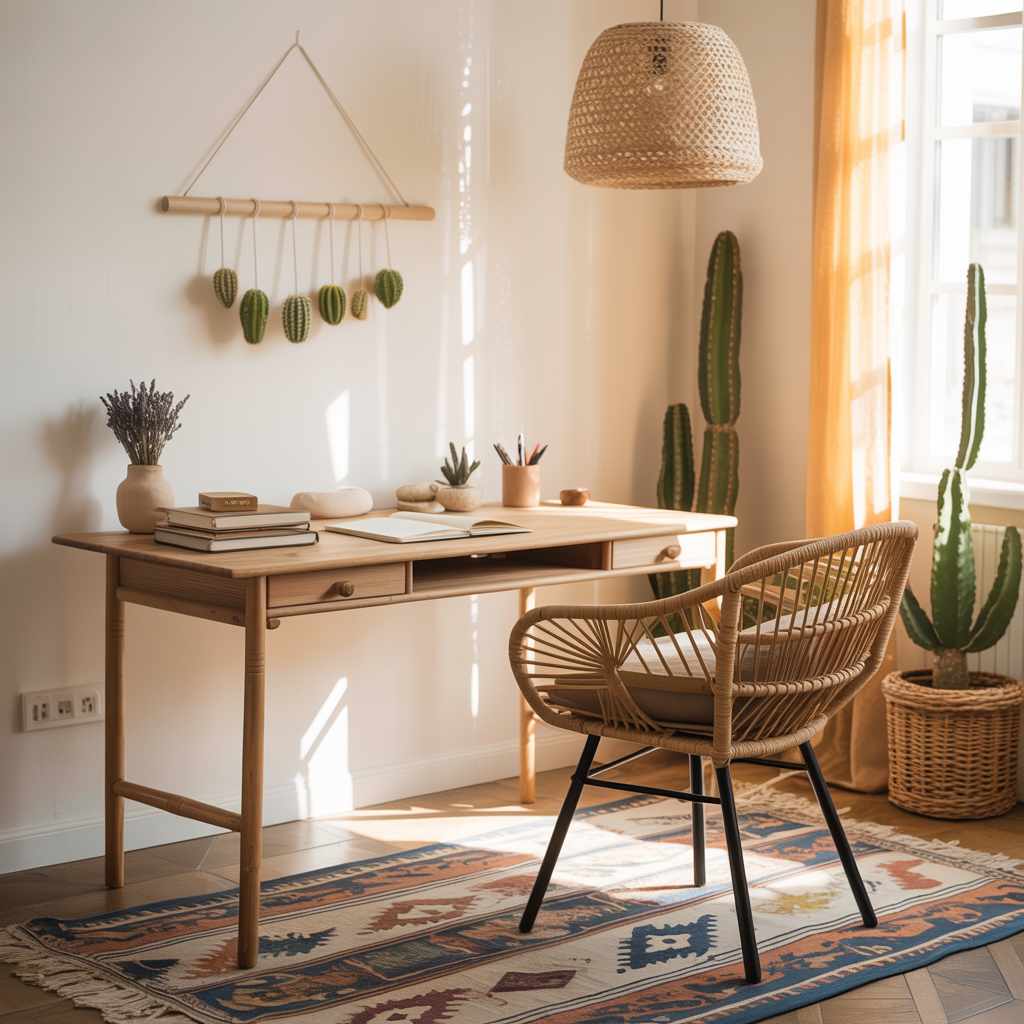
Who says productive spaces have to feel sterile? A boho-inspired office with a rattan chair and textured rugs creates an environment where creativity can flourish. The key is balancing comfort with functionality you want to feel relaxed, not ready for a nap.
Choose a chair that looks good but also supports your back during long work sessions. Layer in textures through rugs, cushions, and wall hangings, but don’t go overboard. The goal is creating a space that feels collected and intentional, not cluttered with every bohemian accessory you can find.
9. Hidden Offices That Disappear When Work Ends
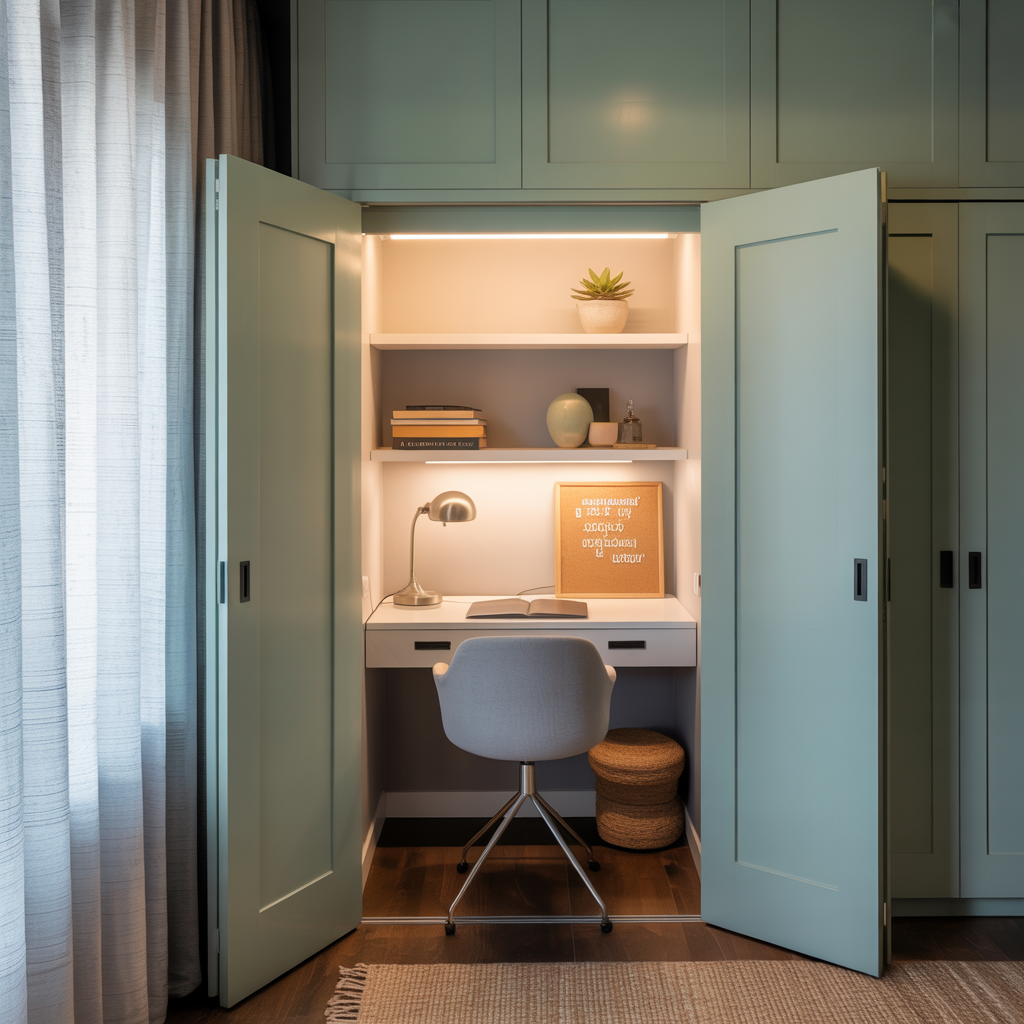
Converting a closet into a compact office might be the smartest space-saving move you’ll ever make. Install sliding doors or a folding screen, and your workspace vanishes when the workday ends. It’s like having a dedicated office that doesn’t sacrifice your living space.
The challenge is making a small space feel comfortable rather than cramped. Good lighting is crucial, and ventilation matters more than you might think. But the psychological benefit of being able to “close” your office at the end of the day is worth working around these limitations.
10. Executive Style for Serious Business
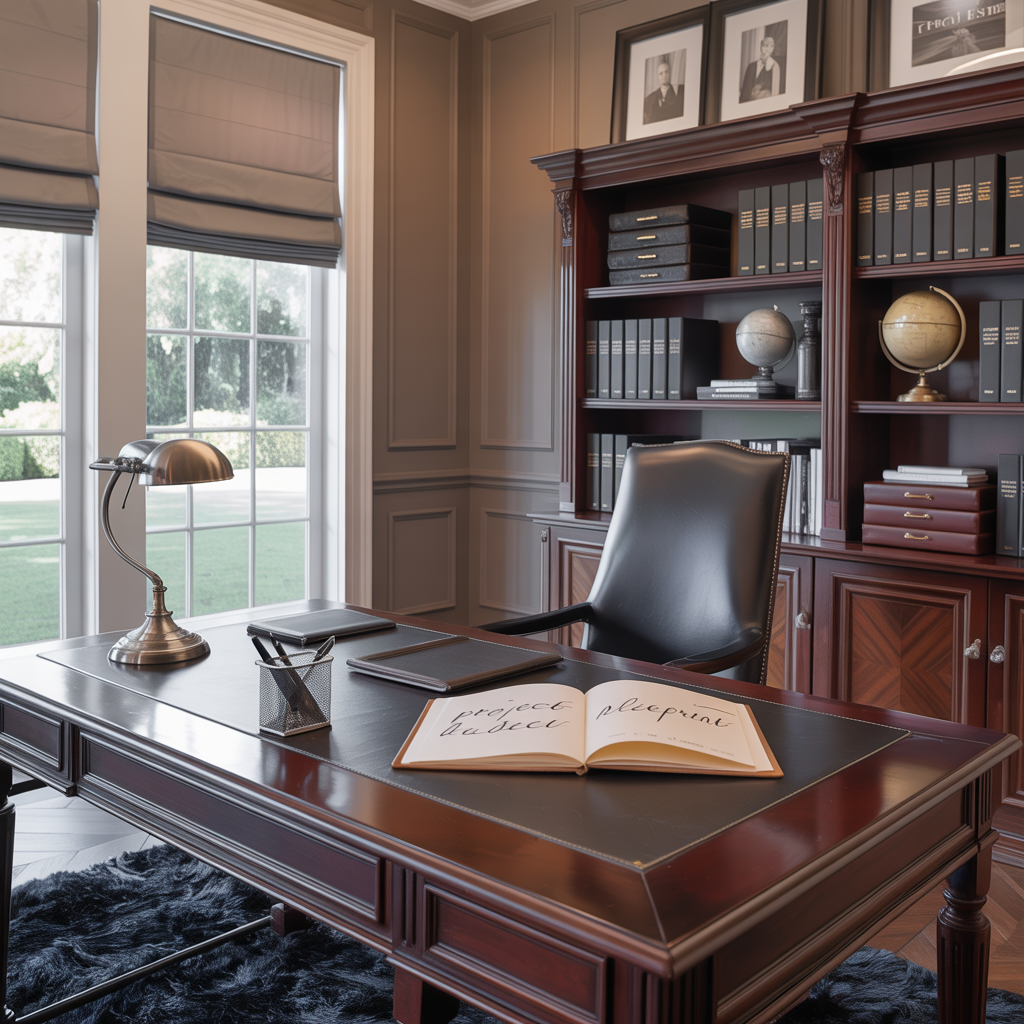
Sometimes you need a workspace that commands respect – whether you’re taking client calls or just want to feel more authoritative in your work. A substantial desk paired with a quality leather chair sends a message that you take your work seriously.
The key is proportion. A massive executive desk can overwhelm a small room, so measure carefully before committing. But when done right, this setup provides ample workspace and storage while creating an atmosphere that encourages focused, important work.
11. Harness Natural Light for Energy and Focus
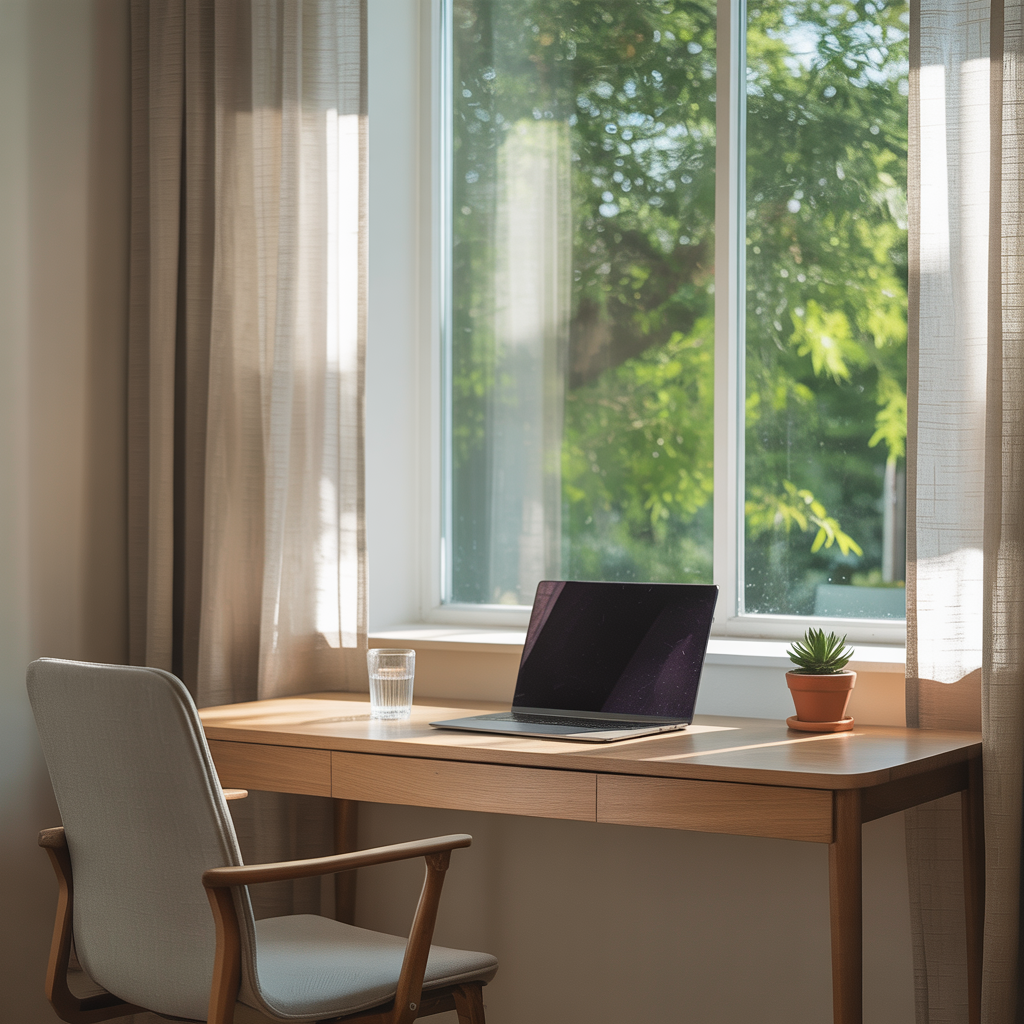
Positioning your desk near a window isn’t just about the view it’s about tapping into natural light’s power to boost mood and alertness. Our bodies are wired to respond to daylight, and working in natural light can reduce eye strain and increase productivity.
The challenge is managing glare and potential distractions from the outside world. Adjustable blinds or curtains give you control over light levels throughout the day. If the view is too tempting, position your monitor so the window is to your side rather than directly in front of you.
12. Shared Spaces That Work for Everyone
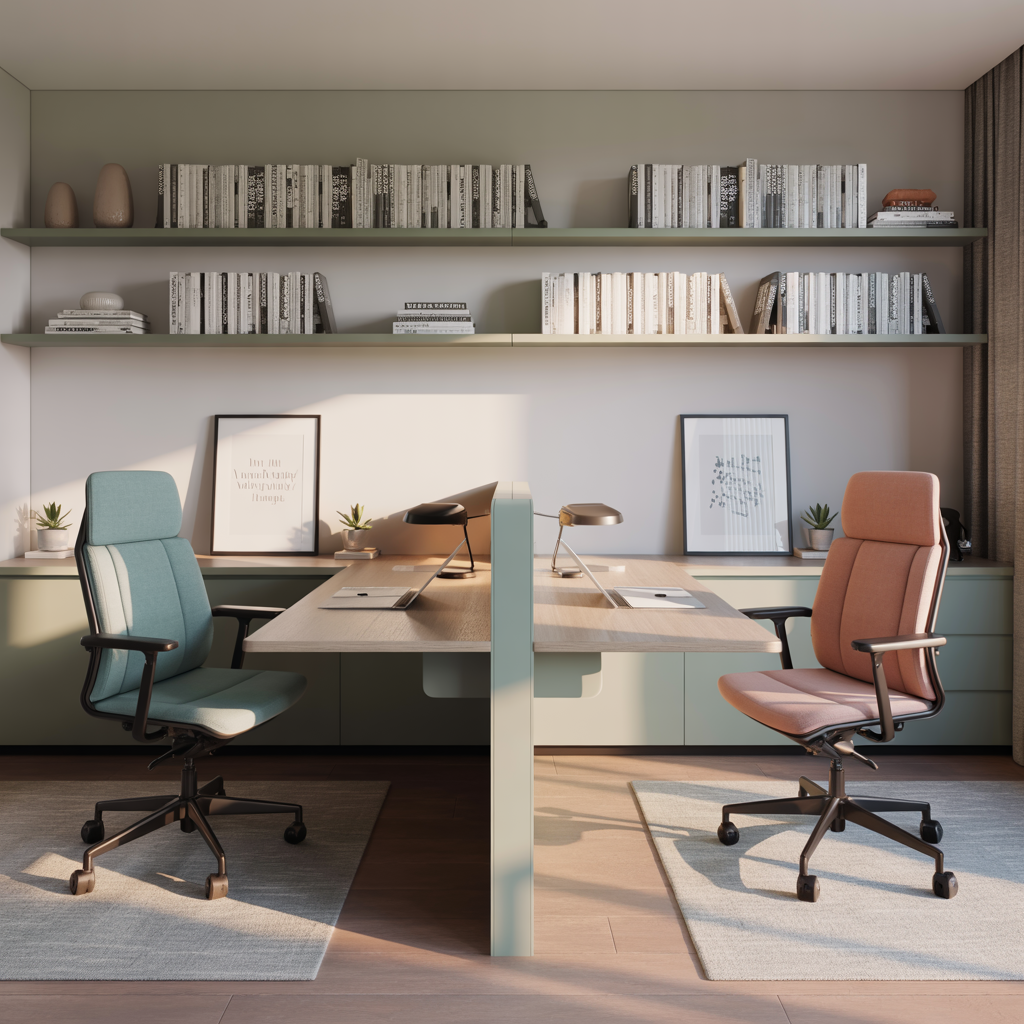
When two people need to share one office, the secret is creating defined zones while maintaining harmony. Back-to-back desks or a shared surface with a divider can give each person their own territory while keeping the space cohesive.
Communication is crucial for shared spaces. Establish ground rules about noise levels during calls, shared storage areas, and personal decoration boundaries. With some planning and mutual respect, a shared office can actually be more motivating than working in isolation.
13. Scandinavian Simplicity for Clear Thinking
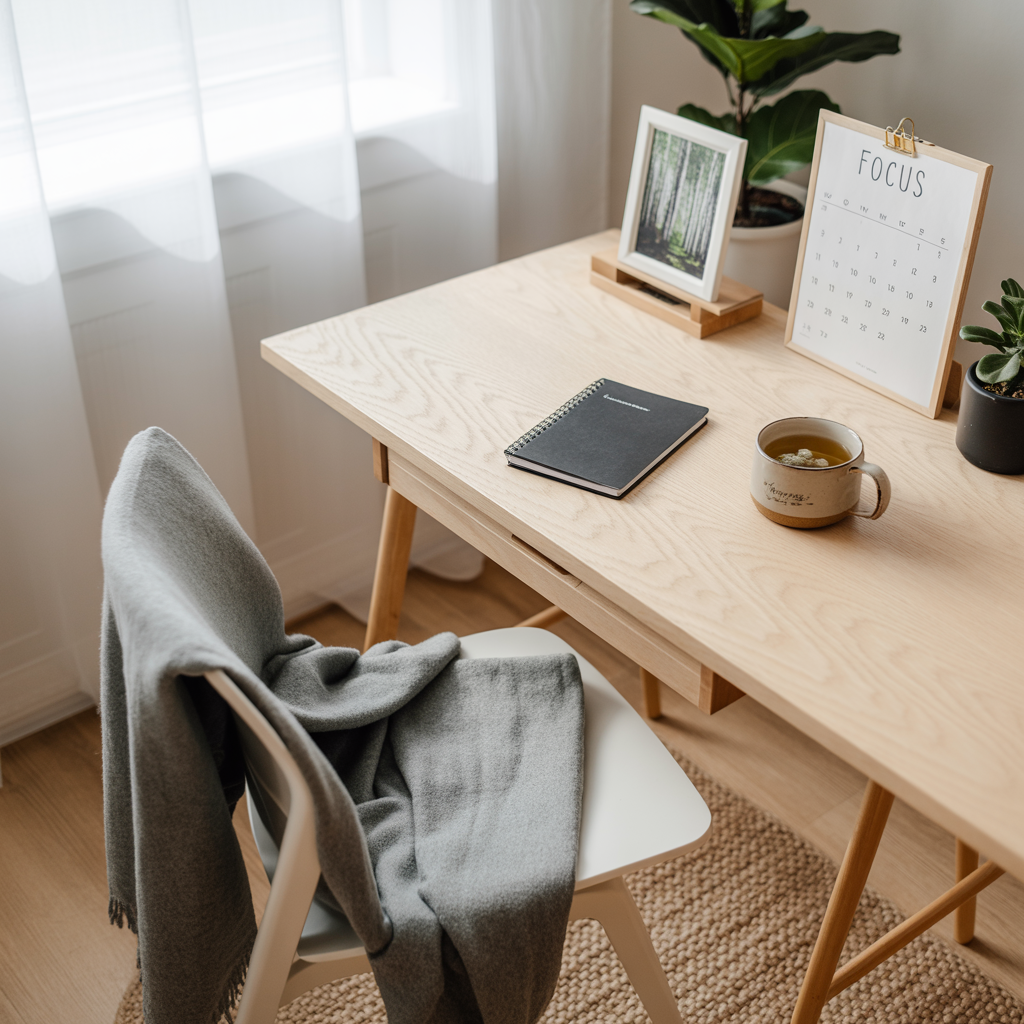
Clean lines, neutral colors, and natural materials create a workspace that feels calm and organized. Scandinavian design principles focus on functionality and simplicity, which translates perfectly to productive work environments.
The risk with this approach is creating a space that feels too sterile. Combat this by incorporating warm wood tones, soft textiles, and personal touches that reflect your personality. The goal is serene, not boring.
14. Backyard Office Retreats
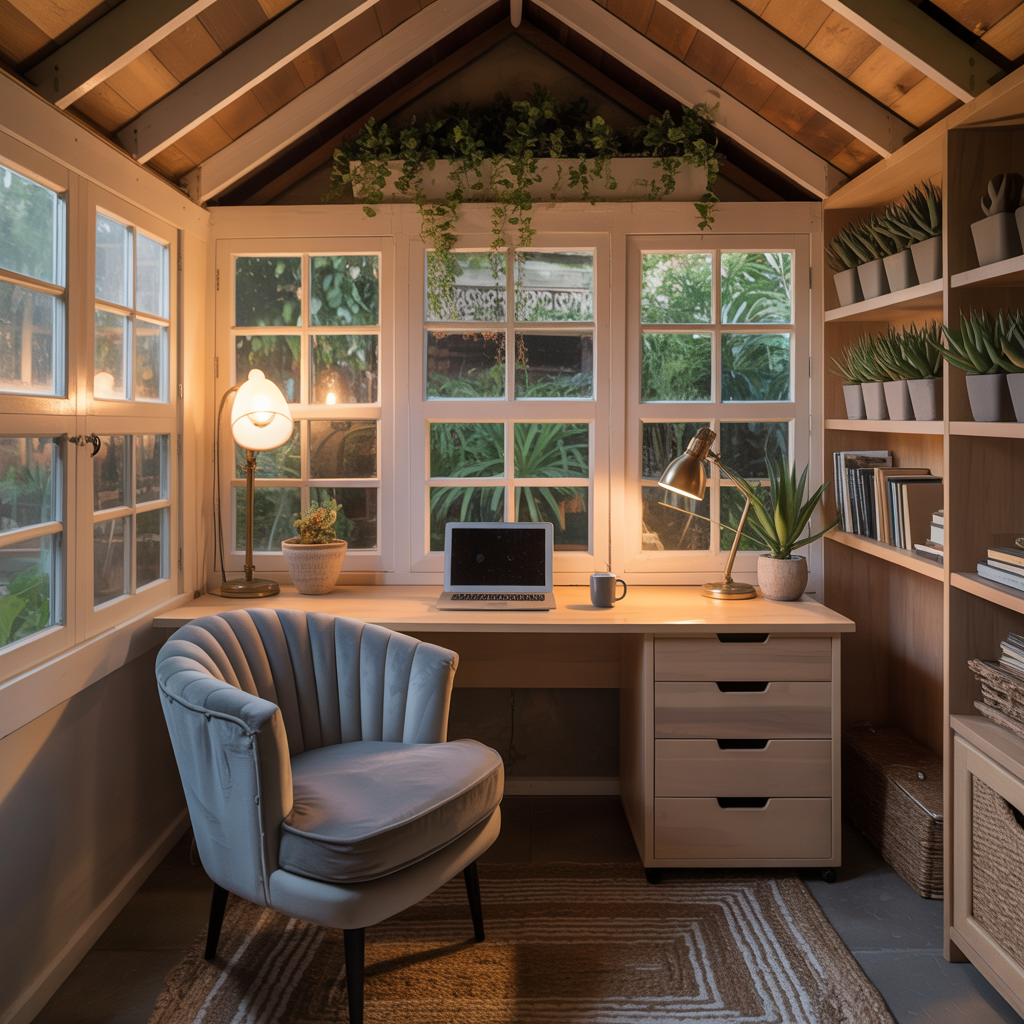
Converting a shed into a dedicated workspace gives you the ultimate separation between home and work life. With some insulation, good lighting, and reliable internet, a backyard office becomes your private productivity sanctuary.
Weather and connectivity are the main challenges. A portable heater extends the usable season, while a WiFi extender ensures you stay connected. The investment in comfort pays off in focus – it’s hard to be distracted by household chores when you’re literally outside the house.
15. Vertical Storage Solutions for Tight Spaces
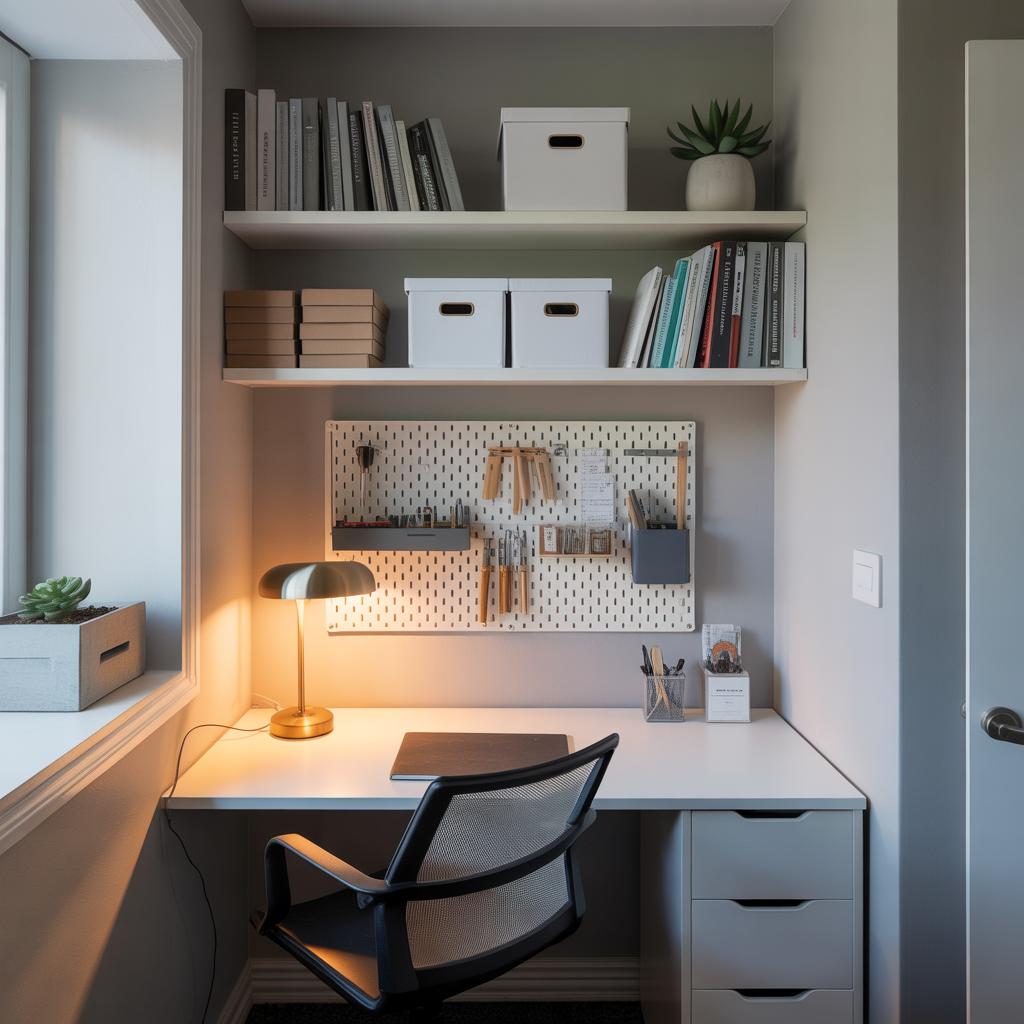
When floor space is limited, thinking vertically opens up possibilities. Wall-mounted shelves, pegboards, and hanging organizers can create storage solutions that don’t crowd your workspace.
The key is keeping frequently used items within easy reach while storing occasional-use items higher up. A well-organized vertical system can make a small space feel more functional than a larger, poorly organized one.
16. Traditional Library Vibes for Serious Work
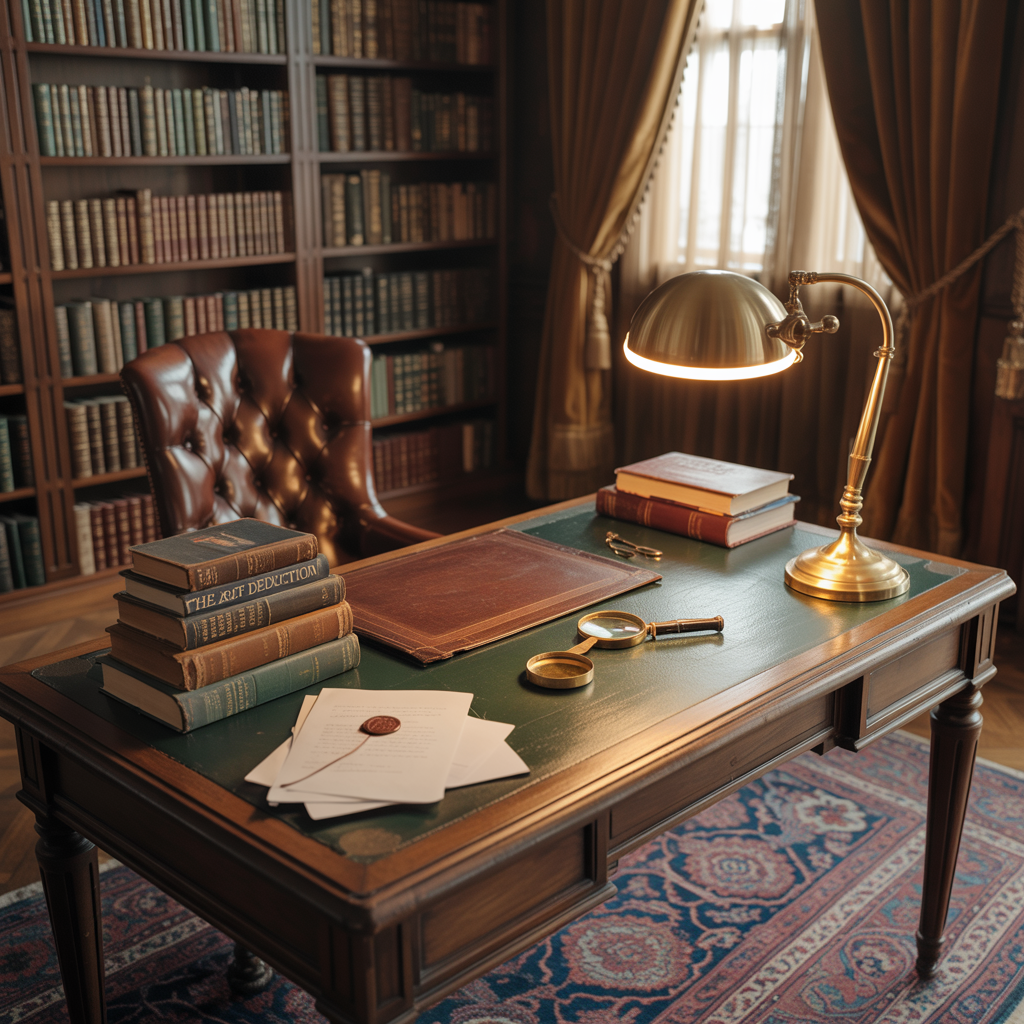
Rich wood paneling and traditional furniture create an atmosphere that whispers “important work happens here.” This classic approach to office design emphasizes permanence and authority, perfect for tasks that require deep concentration.
Balance is crucial with traditional designs. Too much dark wood can make a space feel oppressive, so introduce lighter elements through artwork, rugs, or window treatments. Good lighting is essential – traditional doesn’t have to mean dim.
17. Inspire Creativity with Gallery Wall Displays
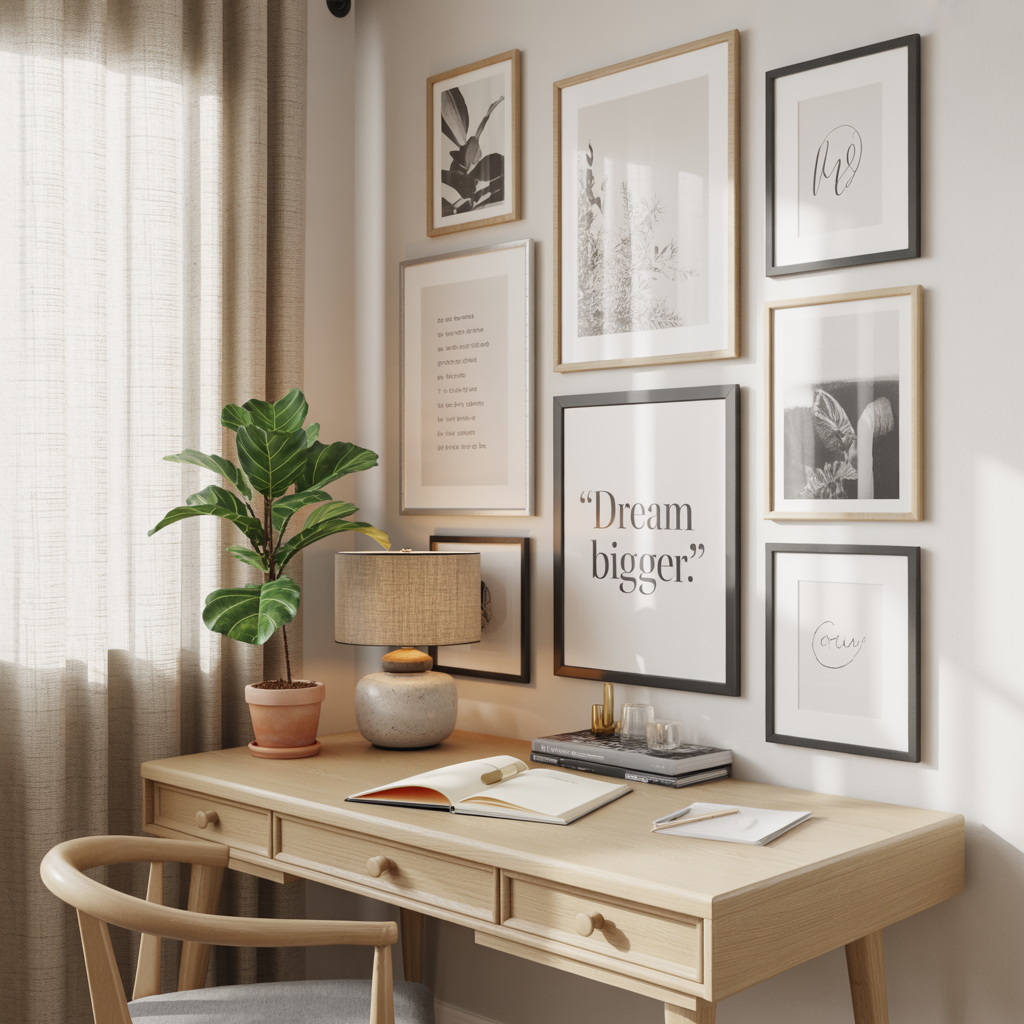
A thoughtfully curated gallery wall above your desk can provide daily inspiration and visual interest. Mix frame sizes, include pieces that make you smile, and don’t be afraid to change things up when you need fresh motivation.
The key is curation, not accumulation. Choose pieces that genuinely inspire you rather than just filling wall space. A few meaningful images or quotes will have more impact than a cluttered collection of random artwork.
18. Bay Window Alcoves for Natural Inspiration
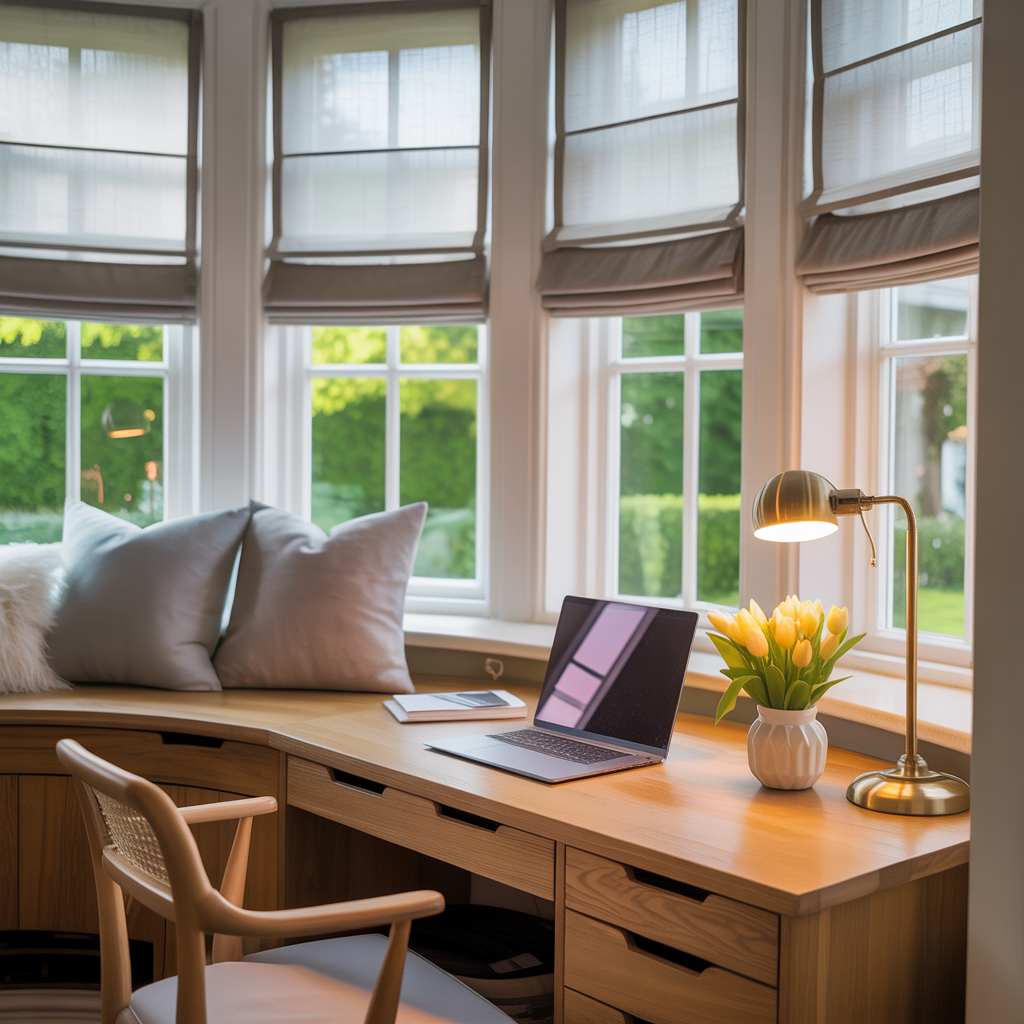
If you’re lucky enough to have a bay window, it’s begging to become your office. The natural light and expanded views create an uplifting work environment that beats any motivational poster.
Glare management is the main consideration. Invest in quality window treatments that let you control light levels throughout the day. The visual connection to the outdoors can be energizing, but make sure it doesn’t become a distraction from your work.
19. Bold Graphics for Visual Energy
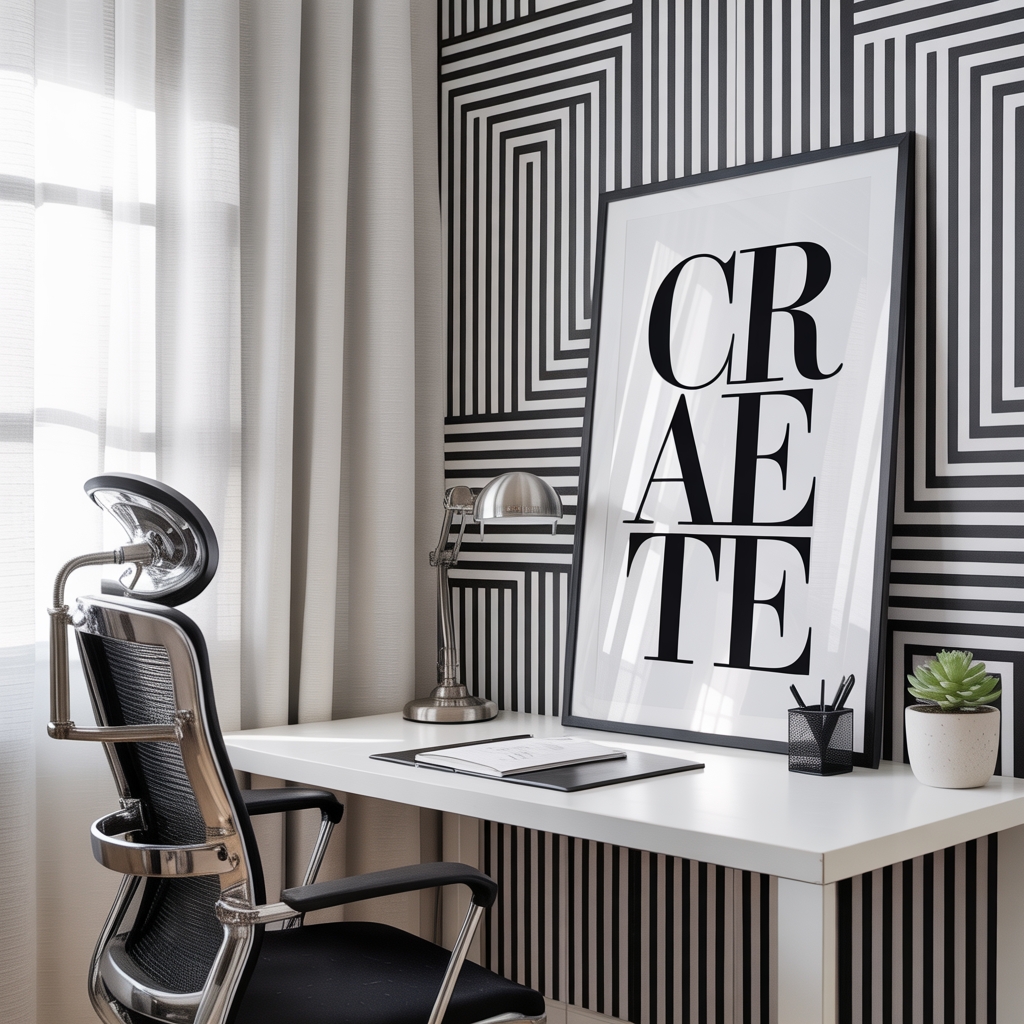
Black and white themes don’t have to be boring when you introduce bold graphic elements. Geometric patterns, striking typography, or abstract art can energize your space while maintaining a cohesive color scheme.
The trick is restraint. Choose one or two statement pieces rather than covering every surface with patterns. Your eye needs places to rest, and too much visual stimulation can actually hinder concentration.
Conclusion
Creating a productive home office doesn’t require an interior design degree or a massive budget. The most effective workspaces are built on practical foundations: good lighting, comfortable seating, smart storage, and a layout that supports how you actually work.
Start small and build from there. Maybe it’s adding a plant to brighten your corner, investing in a desk lamp that reduces eye strain, or finally organizing that pile of papers that’s been staring at you for weeks. Each small improvement compounds, gradually transforming your workspace from a necessary evil into a place where you actually want to spend time.
The goal isn’t perfection – it’s creating a space that works with your habits, not against them. Whether you’re drawn to minimalist aesthetics or prefer a more eclectic approach, the best home office is one that reflects your personality while supporting your productivity.
Your workspace has more influence on your daily experience than you might realize. Take some time this week to evaluate what’s working and what isn’t. Those small adjustments you’ve been putting off might be exactly what you need to make your work-from-home setup finally feel like home.

Add a Comment